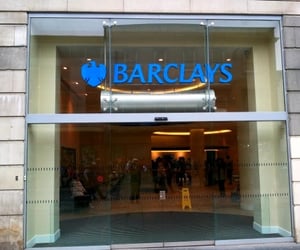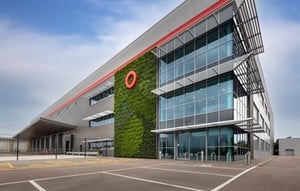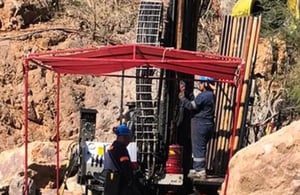Rainbow Rare Earths Ltd (LON:RBW) is the topic of conversation when Arden Partners’ Mining Analyst Charles Fitzroy caught up with DirectorsTalk for an exclusive interview
Q1: Charles, I wanted to talk to you about Rainbow Rare Earths, can you tell us about the Gakara project and a bit about the capital and operating costs involved?
A1: So, Rainbow Rare Earths is a UK listed rare earth mine in Burundi, they have an asset which they are currently in the process of ramping it, it’s called the Gakara project. They have a mining licence about 39 kilometres square of it and a further exploration licence covering 96 kilometres squared. It’s a rare earth mining project focussed on veins which are rich in bastnaesite and monazite and the mineralisation’s related to the carbonite source.
The project benefits from a very simple processing involving zero chemicals, simple gravity separation system, this is possible due to the high density of the ore compared to a surrounding low-density host rock. The ground is very easy to mine, it’s relatively soft needed to extract the ore and Rainbow Rare Earths get a grade of roughly 6% concentrate on the output.
The main operational cost is the fuel, and they’re extremely low and they have a margin of around 60% of their current basket price they receive from their rare earth oxalate concentrate.
They also have very low capital costs and they started the financial year with zero debt and about £3 million cash.
They produce a very low impurity concentrate, it’s very clean and they have a secure offtake agreement with Thyssenkrupp and for the next 10 years. They also benefit from being one of the few rare earth projects that will benefit from near-term production and be able to take advantage of this very positive market fundamentals from, hopefully first, production towards the end of this year.
Q2: So, what are the key elements produced at Gakara and what are their applications?
A2: They have a whole suite of elements but there are four that they get the majority of their revenue from; neodymium, praseodymium, samarium and lanthanum, the two to focus on are neodymium and praseodymium, they account for about 67% and 21% of revenue on average.
The reason why these two are very important is neodymium and praseodymium, mainly neodymium, are used in permanent magnets which are used in hybrid vehicles, electric vehicles, wind turbines, healthcare products and also magnetic train levitation systems, which are mainly used in Asia. Praseodymium is also used in a variety of alloys including permanent magnet alloys and high-strength metals.
Regarding neodymium, it’s the main component in the highest operating permanent magnet which are used in electric vehicles. There are hundreds of small and larger electric motors within electric vehicles and these magnets are used within these ones. The key thing about neodymium is it is used when you need a very high technical application for a permanent magnet, when the requirements are very lightweight and very small. They are also very good for resistance to demagnetisation by external magnetic fields. These magnets offer such a high-level performance owing to their very high maximum energy products compared to other magnetic materials and there’s very good long-term fundamentals for these.
Currently, now, the neodymium magnet market is about 1% of global neodymium demand and it’s predicted to rise by the end of 2020 to about 14% of global demand. So, there is fundamentals for a longer-term price stability and potential upside rise.
Q3: What are the exploration prospects for Rainbow Rare Earths?
A3: So, the project has, as I said before, a mining area of 39 square kilometres and a further exploration licence of around 96 square kilometres, the mining licence is valid for another 23 years and they’ve got 22 targets which they’ve identified through exploration. They’re currently mining 2 of those targets over the next 2 years, after that they’ll have another 20 targets which have a very similar geology and enable them to have a very easy route to processing, which will enable very little recalibration of their processing facilities.
We, in our model, have modelled quite conservative and management’s base case expectations of getting to about 5,000-6,000 tonnes of concentrate per year. Management, longer-term, are obviously planning an upside view of this, of getting sort of 10,000 tonnes and we’ve modelled this too which adds quite a lot to our upside scenario.
We’ve got a target price now of 19p and with the around 10,00 tonnes concentrate, it adds about 8p to that target price and that 81% return from the current price of 16p. The share price has done very well over the last month and a half since we’ve initiated early-October, it’s risen about 50%, it was at 11p and it’s coming up to 15 now, between 15-16.
So, there is a significant upside with the project which benefits from the simple east of exploration and processing the ore.





































